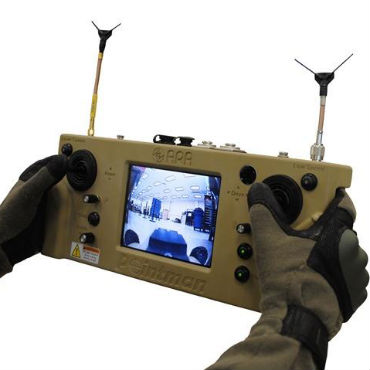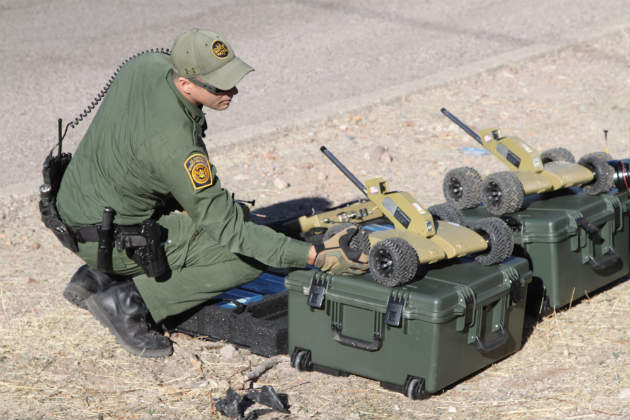Border bots target tunnel smuggling

The wireless robot-based program is aimed at disrupting the flow of contraband without putting agents in harms' way.

A handheld controller is relays signals from the robots Border Patrol agents are using to explore smuggling tunnels along the U.S.-Mexican border.
The Border Patrol's new mobile technology project isn't your typical federal mobile application.
The agency is expanding its wireless robot-based program to help it peer more deeply into the illicit cross-border tunnels that nag Southwestern border security, without putting agents in harm's way.
The Border Patrol unveiled three new Pointman tactical robots at a Jan. 14 demonstration in the border town of Nogales, Ariz., in the agency's Tucson sector.
Tunnel work can be hazardous to agents. The passages have tight spaces and sometimes-unstable walls, while darkness and blind corners can conceal heavily armed smugglers or other dangers.
The robots are small -- 15 inches by 19 inches, and six to 18 inches tall depending on how their camera booms are set. They can compact into a seven-inch-high package to crawl into tight spaces, and are equipped with microphones and two cameras that can see in low and/or infrared light. The signal data from the robot is transmitted wirelessly to the system operator's handheld command device outside the tunnel.
Typically, the robot's underground wireless signal can travel 200 meters line of sight, but soil conditions particular to each location can affect it, said Border Patrol agent Peter Bidegain. As a result, the robots can't be effectively networked to another point -- like a more-distant command post -- and must be controlled by a nearby operator's handheld control pad.

The Border Patrol, Customs and Border Protection, Immigration and Customs Enforcement and federal drug enforcement agencies have pressed smugglers hard on the border's surface to stem illegal traffic in contraband – mostly drugs, but people too. As a result, smugglers have been investing heavily in ambitious and sometimes-elaborate alternatives, including light aircraft and ocean-going boats. Subterranean tunnels, some with their own air processing and rail-car transport systems, are capable of moving more cargo – human and otherwise -- than most alternatives.
In the last decade, smugglers have grown increasingly innovative, apparently employing professional engineers to design some of the structures.
In 2012, U.S. border agencies and local police in the San Diego Tunnel Task Force used detective work and informants to track down a tunnel near the Otay Mesa Port of entry that ran from a warehouse on the U.S. side for 612 yards under the border and into neighboring Tijuana. Border agents seized 32 tons of marijuana from inside the tunnel and the staging areas near it. The passageway was equipped with electric rail cars, lighting, reinforced walls and wooden floors. On the Mexican side, the tunnel's entrance was hidden beneath a hydraulically controlled steel door that covered an elevator beneath the warehouse floor.
Bidegain said although the Tucson sector has seen a slow overall decline in the number of tunnels in the last three years or so -- from 13 discoveries in 2011 to six in 2013 -- "they aren't going away." The Border Patrol discovered its first tunnel of 2014 in Nogales -- a 133-foot long construction -- on Jan. 9.





